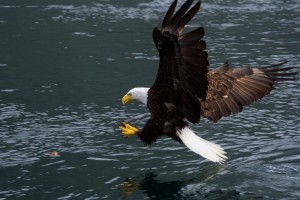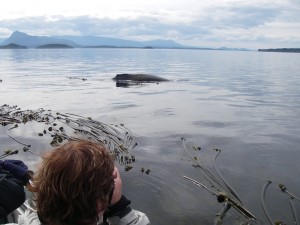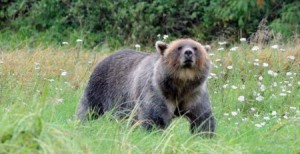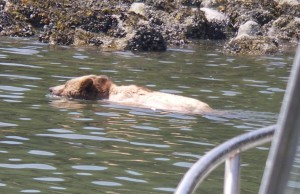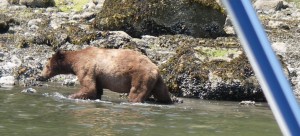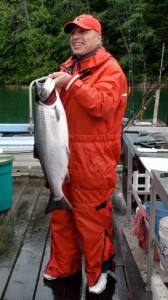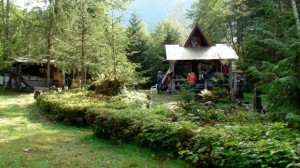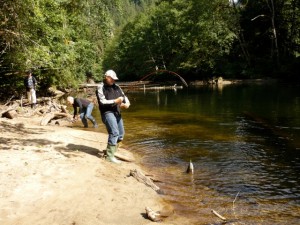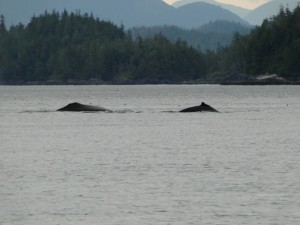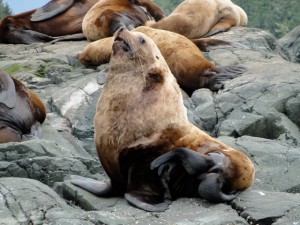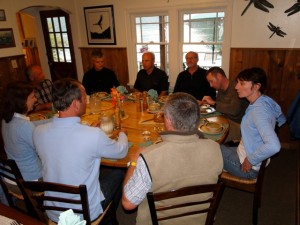Just like that our season has come to an end. I would like to thank all of our wonderful guests and staff who made this year a huge success. I am happy to stay that all of our team is planning to return next season. We are actively taking bookings, with dates starting June 1 2025. Hope to see many of you next season.
The wildlife viewing this season was awesome. A couple highlights that come to mind was the shear number of salmon in our local rivers, as well as the abundance of Resident Orca. With salmon returns being so strong this year, we were happy to see bears in excellent condition. By the end of our season most of the bears had packed on a lot of weight and were getting very “picky” about what parts of the salmon they would eat. Hopefully this will translate into more cubs being born this winter. Another positive was the weather conditions. We had enough rain to keep our fire risks low and it made for some excellent wild berries. The bears took full advantage of this, with the berry season extending far past its normal conclusion. This did mean that we had to work hard to find bears during our summer season, (as they were often feeding on the berries deep into the forest), but moving forward it is excellent that they had such an abundant food supply. The Humpbacks also didn’t disappoint, with great numbers and a few new calves returning with their mothers to feed. After a slower year for resident Orca sightings, this season was one of the best that I can remember. In fact as Im writing this the A62 and A23’s are still being spotted in the area by dedicated biologists. Strong numbers of Chinook and Chum salmon are providing them with a steady food source. There are a lot of positive signs and we are hopeful that 2025 will be another great season.
Over the winter and spring we will be doing some repairs and maintenance. We plan on having a new cedar front deck built in time for the 2025 season, as well as new ceilings and paint in parts of the lodge and rooms. Theres always projects on the go.
Felix, Julien, Ryan, Zack and Myself all look forward to welcoming guest in June. See everyone soon.
Angus Reid
Visit our Blog

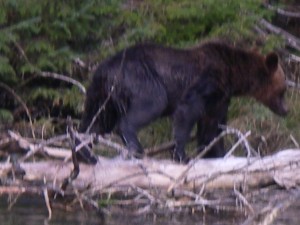 The photos are not as clear as they could be but my excuse is that I was maneuvering the boat while taking photos one-handed. The interesting aspect is the location. We were heading back to the lodge from a day’s successful whale watching to find this grizzly swimming between islands. We were about eight miles from the lodge toward Vancouver Island. It has become more common in the past five years to see and have reports of grizzly bears in the area of the lodge and closer to Vancouver Island. As a result of the healthy population of grizzly bears in Knight Inlet the sub-adult bears are being forced out of the area and are starting to migrate down the Inlet and across Johnstone Strait to take up residence on Vancouver Island. Grizzly bears have been sighted on the Island from Sayward to Port McNeil. To view a map of the areas mentioned scroll down the sidebar on the left to “Pages” then to “Google Map of Grizzly Bear Lodge Itinerary”.
The photos are not as clear as they could be but my excuse is that I was maneuvering the boat while taking photos one-handed. The interesting aspect is the location. We were heading back to the lodge from a day’s successful whale watching to find this grizzly swimming between islands. We were about eight miles from the lodge toward Vancouver Island. It has become more common in the past five years to see and have reports of grizzly bears in the area of the lodge and closer to Vancouver Island. As a result of the healthy population of grizzly bears in Knight Inlet the sub-adult bears are being forced out of the area and are starting to migrate down the Inlet and across Johnstone Strait to take up residence on Vancouver Island. Grizzly bears have been sighted on the Island from Sayward to Port McNeil. To view a map of the areas mentioned scroll down the sidebar on the left to “Pages” then to “Google Map of Grizzly Bear Lodge Itinerary”.
